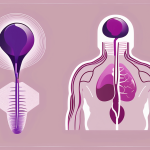Navigating the journey of prostate cancer begins with understanding its stages, from early detection to advanced management. This guide delves into the basics, staging importance, and the tailored treatments available at each stage, offering a beacon of hope and empowerment for those affected. With options ranging from surgery and radiation to hormone therapy and innovative approaches like immunotherapy, patients can make informed decisions for their health journey. Emphasizing the significance of regular follow-up care and the power of a positive outlook, this article encourages patients to actively engage in their treatment process, ensuring they’re not alone in their fight against prostate cancer.
Prostate cancer is a complex and often overwhelming diagnosis. But by understanding the stages of this disease, you can better navigate your treatment options, make informed decisions, and ultimately take control of your health. In this article, we’ll explore the basics of prostate cancer, the importance of staging, an overview of the different stages, treatment options for each stage, and practical advice on living with this condition.
The Basics of Prostate Cancer
Prostate cancer originates in the prostate gland, a small walnut-shaped organ located just below the bladder in men. It develops when abnormal cells in the prostate multiply uncontrollably, forming a tumor. This growth can interfere with the normal functions of the prostate and, if left untreated, spread to other areas of the body.
The prostate gland is an essential part of the male reproductive system. It produces a fluid that nourishes and transports sperm. As men age, the prostate gland can undergo changes, which may lead to the development of prostate cancer. Understanding the intricacies of this disease is crucial for early detection and effective treatment.
What is Prostate Cancer?
Prostate cancer is a malignant tumor that affects the prostate gland. While the causes of prostate cancer are not fully understood, age, family history, and certain genetic factors can increase the risk of developing this condition. Regular prostate screenings, including a prostate-specific antigen (PSA) blood test and a digital rectal exam, can help detect cancer at an early stage when treatment is most effective.
Prostate cancer can vary in its aggressiveness and growth rate. Some tumors may grow slowly and remain localized within the prostate gland, while others can be more aggressive and spread to nearby tissues or distant organs. The stage and grade of the cancer determine the appropriate treatment options and prognosis.
Risk Factors and Symptoms
Knowing the risk factors associated with prostate cancer can help individuals take proactive steps towards prevention or early detection. Age is the most significant risk factor, with the majority of cases occurring in men over the age of 65. Additionally, a family history of prostate cancer, African American ethnicity, and certain gene mutations can increase the risk.
While the exact cause of prostate cancer remains unknown, researchers have identified several factors that may contribute to its development. Hormonal imbalances, exposure to certain chemicals, inflammation of the prostate, and a sedentary lifestyle are among the potential risk factors being studied.
Prostate cancer may not cause noticeable symptoms in its early stages. However, as the disease progresses, symptoms such as frequent urination, difficulty starting or stopping urination, blood in the urine or semen, and erectile dysfunction may occur. These symptoms can be indicative of various prostate conditions, including benign prostatic hyperplasia (BPH), prostatitis, or prostate cancer. If you experience any of these symptoms, it’s important to consult with a healthcare professional for further evaluation.
It is worth noting that the presence of symptoms does not necessarily indicate the presence of prostate cancer. Many of these symptoms can also be attributed to non-cancerous conditions. However, it is crucial to seek medical advice to rule out any potential underlying issues and receive appropriate care.
Early detection and timely treatment play a vital role in improving the outcomes for individuals diagnosed with prostate cancer. Regular screenings, awareness of risk factors, and maintaining a healthy lifestyle can contribute to reducing the risk and promoting overall prostate health.
The Importance of Prostate Cancer Staging
Once prostate cancer is diagnosed, staging becomes crucial in determining the extent and aggressiveness of the disease. Staging helps oncologists develop a personalized treatment plan based on the specific characteristics of your cancer. Additionally, it provides valuable information about prognosis and helps gauge the response to treatment.
Role of Staging in Treatment Planning
Staging allows healthcare professionals to assess the size of the tumor, the involvement of nearby lymph nodes, and the presence of cancer metastasis. This information is vital in choosing the most appropriate treatment approach. Different stages of prostate cancer may require different treatments, including surgery, radiation therapy, hormone therapy, chemotherapy, or a combination of these modalities. Your doctor will discuss the best treatment options for your specific stage and individual circumstances.
How Staging Influences Prognosis
Understanding your cancer’s stage can provide insight into your prognosis. While each case is unique, early-stage prostate cancer often has a more favorable prognosis compared to advanced-stage disease. Higher-stage cancers may require more aggressive treatments and may have a higher risk of recurrence or spread. However, it’s important to remember that survival rates and outcomes are influenced by various factors, including your overall health, response to treatment, and individual characteristics.
An Overview of Prostate Cancer Stages
Prostate cancer is categorized into four main stages: stage I to stage IV. Each stage signifies the progression and extent of the disease. Let’s take a closer look at each stage:
Stage I Prostate Cancer
In stage I, cancer is confined to the prostate and is usually small and growing slowly. It may not cause noticeable symptoms and is often detected incidentally during routine screenings. Treatment options for stage I prostate cancer may include active surveillance, where the cancer is monitored closely and treatment initiated if the cancer shows signs of progression.
Stage II Prostate Cancer
Stage II prostate cancer involves larger tumors that have not yet spread beyond the prostate. The cancer may be more aggressive than in stage I, but it remains localized. Treatment options for stage II prostate cancer typically include surgery, radiation therapy, or a combination of these approaches.
Stage III Prostate Cancer
Stage III prostate cancer signifies the presence of cancer that has spread beyond the prostate to nearby tissues or lymph nodes. While still considered a regional spread, stage III cancer requires more aggressive treatment measures, including surgery, radiation therapy, hormone therapy, or a combination of these treatments.
Stage IV Prostate Cancer
Stage IV prostate cancer is the most advanced stage, indicating that the cancer has spread to distant organs or tissues, such as the bones, liver, or lungs. Treatment for stage IV prostate cancer focuses on managing symptoms, controlling the spread of the disease, and improving the quality of life through various treatment modalities.
Treatment Options for Different Stages
Treatment options for prostate cancer vary depending on the stage of the disease. Early-stage prostate cancer often provides a wider range of treatment choices, while advanced-stage disease may require more aggressive approaches. Let’s delve into the treatment options for each stage:
Early Stage Treatment Approaches
- Surgery: Surgical removal of the prostate gland, known as a prostatectomy, is a common treatment option for early-stage prostate cancer.
- Radiation Therapy: High-energy beams are used to target and destroy cancer cells. Radiation therapy can be administered externally or internally through radioactive seeds implanted directly into the prostate.
- Active Surveillance: For slow-growing and low-risk cancers, regular monitoring may be recommended before initiating treatment, allowing patients to avoid potential side effects.
Advanced Stage Treatment Strategies
- Hormone Therapy: Prostate cancer cells often rely on male hormones, specifically testosterone, to grow. Hormone therapy aims to reduce the body’s production of testosterone or block its effects on cancer cells.
- Chemotherapy: Drugs are used to kill cancer cells or slow down their growth. Chemotherapy may be recommended in advanced-stage prostate cancer to manage symptoms and prolong survival.
- Immunotherapy: This newer treatment approach stimulates the body’s immune system to recognize and attack cancer cells.
- Palliative Care: Focuses on providing relief from symptoms such as pain, nausea, and fatigue, and improving the quality of life for individuals with advanced-stage prostate cancer.
Living with Prostate Cancer
Receiving a prostate cancer diagnosis can be emotionally challenging, but it’s essential to remember that you are not alone. Learning how to cope with your diagnosis and incorporating self-care strategies can help you navigate this journey more effectively.
Coping with Diagnosis and Treatment
Upon receiving a prostate cancer diagnosis, it’s normal to experience a range of emotions, including fear, anxiety, and uncertainty. Connecting with support networks, such as cancer support groups or counseling services, can provide you with invaluable emotional support, guidance, and a sense of community.
Additionally, practicing stress-reducing techniques, maintaining a healthy lifestyle, and staying engaged in activities that bring you joy can empower you to cope with the challenges of diagnosis and treatment.
Long-term Management and Follow-up Care
After completing treatment, regular follow-up care is crucial to monitor your prostate health and identify any potential changes or recurrences early on. Your healthcare team will develop a personalized follow-up plan tailored to your specific needs, which may include routine blood tests, imaging scans, and other surveillance measures.
Taking an active role in managing your health through regular exercise, a balanced diet, and open communication with your healthcare providers can help optimize your long-term well-being.
Understanding prostate cancer stages equips you with the knowledge needed to make informed decisions about your care. Remember that each person’s journey is unique, and your healthcare team is here to guide and support you every step of the way. By taking an active role in your treatment and adopting a positive mindset, you can effectively navigate the stages of prostate cancer and live a fulfilling life.






